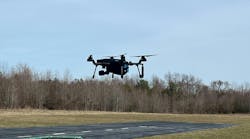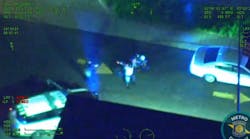It's the stuff of science fiction: a system of sensors in high-crime areas that allows Milwaukee police to pinpoint exactly where gunshots have been fired.
On Thursday before the Common Council's Public Safety Committee, a top Milwaukee Police Department official provided new details of how the system has helped fight crime in the two years it has been in place.
The system is called ShotSpotter. It detects the shock waves from a bullet being fired and transmits that information immediately to the department's communications facility and computers inside squad cars.
The system is so sensitive that it can tell the difference between the sound of a 9mm Glock, a .45-caliber revolver, a shotgun or another long rifle. And it can pinpoint the location to a specific address or spot, allowing officers to get to the scene in minutes.
Deputy Inspector Mary Hoerig said the system had solved crimes, resulted in the arrests of suspects, cleared up conflicting stories from witnesses or suspects at a crime scene and kept officers headed to the scene from harm.
Hoerig did not provide specifics of arrests, but said the department was happy with ShotSpotter.
The city spends $40,000 a year for every square mile covered; approximately three squares miles are in the system now.
"We would like to lease more miles," she said, adding that up to 12 square miles in high-crime areas could potentially be included in the system.
Currently, the system is in place in undisclosed, high-crime areas.
Hoerig told aldermen the system, which she called a "gunshot location system," has the capability to pick up the sound of gunfire inside a building or home under certain conditions.
Given the cost and the apparent effectiveness, Ald. Bob Bauman asked why the Police Department didn't ask for more money to cover the entire 96 square miles of the city.
"If it's so effective, I don't know why we are holding back," Bauman said.
By Bauman's math, it would cost $3.84 million to install sensors throughout the city, although Hoerig indicated that the system is intended for high-crime, high-gunfire areas of the city.
The committee took no action on the matter.
Copyright 2013 - Milwaukee Journal Sentinel
McClatchy-Tribune News Service


